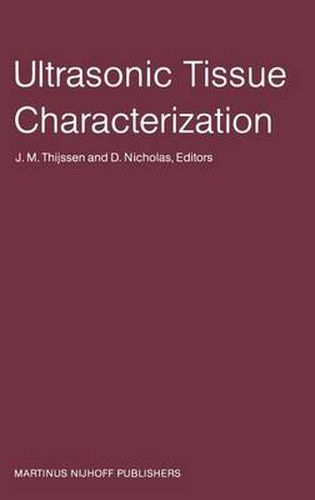Readings Newsletter
Become a Readings Member to make your shopping experience even easier.
Sign in or sign up for free!
You’re not far away from qualifying for FREE standard shipping within Australia
You’ve qualified for FREE standard shipping within Australia
The cart is loading…






This title is printed to order. This book may have been self-published. If so, we cannot guarantee the quality of the content. In the main most books will have gone through the editing process however some may not. We therefore suggest that you be aware of this before ordering this book. If in doubt check either the author or publisher’s details as we are unable to accept any returns unless they are faulty. Please contact us if you have any questions.
The second E. C. Workshop on Ultrasonic Tissue Characterization was organized for the assessment of research goals and plans as the basis to a grant proposal for a Concerted Action which will be forwarded to the European Commission. It should, therefore, not only be considered as a work in progress exhibition which succeeded the former activities within the E. C. (Inventory on Tissue Characterization in Europe and first Workshop). The Steering Group invited a 1 imited group of Institutes to send its group leader and a research fel low in the entitled field, who should expose the overall research program, as wei 1 as the more specific work on tissue characterization by RF signal analysis and spectroscopy. The ultimate goal of the Workshop has been the formulation of schemes of interaction among the Institutes and individuals and the definition of cooperative research programs. The remainder of the groups and some of the groups present are working in the field of analysis and processing of cl inical A- and B-mode echograms (i. e. video signals). Because this work is more closely related to the cl inical diagnostics it was decided that for that reason no preparatory workshop was needed. In the final proposal for the Concerted Action this work wi 1 1 get ample attention. Although not many clinicians were present, their positive interest in the sophisticated analysis techniques and their contribution to the dis cussions again have been a most valuable and stimulating experience.
$9.00 standard shipping within Australia
FREE standard shipping within Australia for orders over $100.00
Express & International shipping calculated at checkout
This title is printed to order. This book may have been self-published. If so, we cannot guarantee the quality of the content. In the main most books will have gone through the editing process however some may not. We therefore suggest that you be aware of this before ordering this book. If in doubt check either the author or publisher’s details as we are unable to accept any returns unless they are faulty. Please contact us if you have any questions.
The second E. C. Workshop on Ultrasonic Tissue Characterization was organized for the assessment of research goals and plans as the basis to a grant proposal for a Concerted Action which will be forwarded to the European Commission. It should, therefore, not only be considered as a work in progress exhibition which succeeded the former activities within the E. C. (Inventory on Tissue Characterization in Europe and first Workshop). The Steering Group invited a 1 imited group of Institutes to send its group leader and a research fel low in the entitled field, who should expose the overall research program, as wei 1 as the more specific work on tissue characterization by RF signal analysis and spectroscopy. The ultimate goal of the Workshop has been the formulation of schemes of interaction among the Institutes and individuals and the definition of cooperative research programs. The remainder of the groups and some of the groups present are working in the field of analysis and processing of cl inical A- and B-mode echograms (i. e. video signals). Because this work is more closely related to the cl inical diagnostics it was decided that for that reason no preparatory workshop was needed. In the final proposal for the Concerted Action this work wi 1 1 get ample attention. Although not many clinicians were present, their positive interest in the sophisticated analysis techniques and their contribution to the dis cussions again have been a most valuable and stimulating experience.